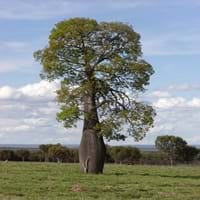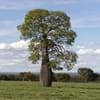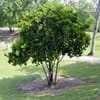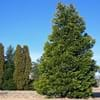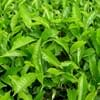Life Span
Biennial
Perennial
Type
Tree
Flowering Plants, Fruits, Trees
Origin
Australia
Anatolia, Asia, Europe, Iran, Maghreb, Morocco, Norway, The Hiamalayas
Types
Narrowleaf Bottle Tree, Pink Flame Tree, Rusty Kurrajong
Flowering Cherries, Sour Cherries, Sand Cherries, Sweet Cherries, Capulin Cherries
Habitat
Subtropical climates, Subtropical forests
Forest edges, Wild, Woods
USDA Hardiness Zone
9-11
4-8
Sunset Zone
H1, H2, 15, 16, 17, 18, 19, 20, 21, 22, 23, 24
4, 5, 6, 7, 15, 16, 17
Habit
Upright/Erect
Upright/Erect
Flower Color
Crimson, Orange Red
White
Flower Color Modifier
Bicolor
Not Available
Fruit Color
Dark Red, Sienna, Chocolate
Red
Leaf Color in Spring
Not Available
Dark Green
Leaf Color in Summer
Red, Green, Light Green
Orange
Leaf Color in Fall
Green
Orange
Leaf Color in Winter
Green
Orange
Plant Season
Spring, Summer
Spring, Summer
Sunlight
Full Sun, Partial Sun
Full Sun, Partial shade
Type of Soil
Loam, Sand
Loamy, Well drained
The pH of Soil
Acidic, Neutral
Slightly Acidic
Soil Drainage
Well drained
Average
Bloom Time
Early Spring, Spring, Late Spring, Early Summer
Early Spring, Spring
Tolerances
Pollution, Drought
Heat And Humidity, Not Available
Where to Plant?
Ground
Ground
How to Plant?
Grafting, Seedlings
Grafting, Seedlings, Transplanting
Plant Maintenance
Medium
Medium
Watering Requirements
Average Water Needs, Do Not over Water, Requires regular watering
Never Over-water, Over-watering can cause leaf problems or root diseases, Prefer drip-irrigation instead of Over-head watering, Water twice a day in the initial period
In Summer
Lots of watering
Lots of watering
In Spring
Moderate
Moderate
In Winter
Average Water
Average Water
Soil pH
Acidic, Neutral
Slightly Acidic
Soil Type
Loam, Sand
Loamy, Well drained
Soil Drainage Capacity
Well drained
Average
Sun Exposure
Full Sun, Partial Sun
Full Sun, Partial shade
Pruning
Remove branches, Remove damaged leaves, Remove dead branches, Remove dead leaves, Remove dead or diseased plant parts, Remove deadheads
Don't prune in the fall, Prune if you want to improve plant shape, Prune in late winter, Remove dead or diseased plant parts, Remove deadheads
Fertilizers
Nitrogen
All-Purpose Liquid Fertilizer
Pests and Diseases
Red blotch
Aphids, Bacterial Canker, Black Knot, Brown Rot, Caterpillars
Plant Tolerance
Drought, Pollution
Drought
Flower Petal Number
Single
Not Available
Foliage Texture
Medium
Not Available
Foliage Sheen
Glossy
Not Available
Attracts
Hummingbirds
Birds
Allergy
allergic reaction, Skin irritation
Swelling in the face
Aesthetic Uses
Showy Purposes
Showy Purposes
Beauty Benefits
Not Available
Not Available
Environmental Uses
Air purification, Nesting sites for birds, Shadow Tree, Wildlife
Air purification
Medicinal Uses
Not Available
Arthritis, Gout, Kidney problems, Rheumatoid arthritis, Swelling
Part of Plant Used
Root, Seeds
Flowers, Fruits
Other Uses
Used as Ornamental plant
Wood is used for making furniture
Used As Indoor Plant
No
No
Used As Outdoor Plant
Yes
Yes
Garden Design
Feature Plant, Shade Trees, Street Trees, Tropical
Not Available
Botanical Name
BRACHYCHITON rupestris
Prunus avium
Common Name
Australian Flame Tree, Flame Bottle Tree, Illawarra Flame Tree
Cherry Tree
In Hindi
बोतल ट्री
चेरी का पेड़
In German
Flaschenbaum
Kirschbaum
In French
Bouteille Arbre
Cerisier
In Spanish
Árbol de la botella
Cerezo
In Greek
Μπουκάλι Δέντρο
κερασιά
In Portuguese
Bottle Tree
árvore de cereja
In Polish
Butelka Drzewo
wiśniowe drzewo
In Latin
Utrem ligno
Cherry
Phylum
Magnoliophyta
Magnoliophyta
Class
Magnoliopsida
Magnoliopsida
Family
Sterculiaceae
Rosaceae
Genus
brachychiton
Prunus
Clade
Angiosperms, Eudicots, Rosids
Angiosperms, Eudicots, Rosids
Tribe
Sterculieae
Not Available
Subfamily
Sterculioideae
Not Available
Number of Species
Not Available
Season and Care of Bottle Tree and Cherry Tree
Season and care of Bottle Tree and Cherry Tree is important to know. While considering everything about Bottle Tree and Cherry Tree Care, growing season is an essential factor. Bottle Tree season is Spring and Summer and Cherry Tree season is Spring and Summer. The type of soil for Bottle Tree is Loam, Sand and for Cherry Tree is Loamy, Well drained while the PH of soil for Bottle Tree is Acidic, Neutral and for Cherry Tree is Slightly Acidic.
Bottle Tree and Cherry Tree Physical Information
Bottle Tree and Cherry Tree physical information is very important for comparison. Bottle Tree height is 2,743.20 cm and width 1,500.00 cm whereas Cherry Tree height is 17.50 cm and width 17.50 cm. The color specification of Bottle Tree and Cherry Tree are as follows:
Bottle Tree flower color: Crimson and Orange Red
Bottle Tree leaf color: Not Available
Cherry Tree flower color: White
- Cherry Tree leaf color: Dark Green
Care of Bottle Tree and Cherry Tree
Care of Bottle Tree and Cherry Tree include pruning, fertilizers, watering etc. Bottle Tree pruning is done Remove branches, Remove damaged leaves, Remove dead branches, Remove dead leaves, Remove dead or diseased plant parts and Remove deadheads and Cherry Tree pruning is done Don't prune in the fall, Prune if you want to improve plant shape, Prune in late winter, Remove dead or diseased plant parts and Remove deadheads. In summer Bottle Tree needs Lots of watering and in winter, it needs Average Water. Whereas, in summer Cherry Tree needs Lots of watering and in winter, it needs Average Water.
